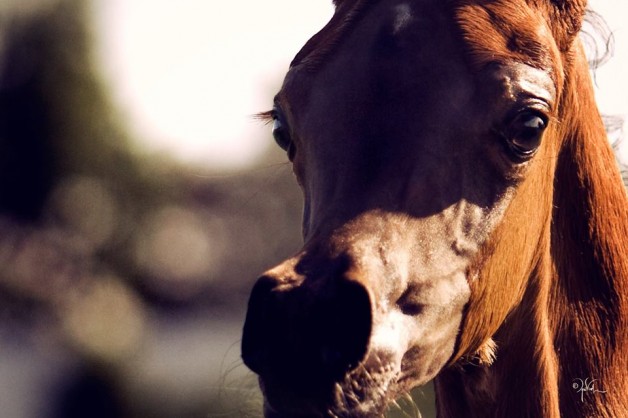By Christa Lesté-Lasserre, MA
Are you breeding to produce a stallion? Or maybe you’re planning a breeding around a mare’s “normal” gestation to have a foal on the ground at a certain time. Either way, check your mare line! New study results from German researchers suggest that maternal lineage plays a significant role not only in the sex of the fetus, but also in the length of gestation.
Scientists at the Graf Lehndorff Institute for Equine Science, in Neustadt, have determined that mitochondrial DNA—which is passed down to offspring exclusively from the mother—appears to influence fetal sex and gestation length in horses. The researchers also identified heritability of both foal sex and gestation length in the dam’s bloodline. This marks the first time such a connection has been made in any mammalian species.
“If looking for effects on heritability, it is always advantageous if the traits have a high variability, and that is absolutely the case with horses because they have such variable gestation lengths,” said Christine Aurich, DVM, PhD, head of the Graf Lehndorff Institute. “Also, the fact that we had a large number of mares and breeding seasons with very constant environmental conditions (because they all live at the national stud at Neustadt) gave us the opportunity to make such a discovery.”
The researchers investigated 786 breedings resulting in 640 live foals from 142 mares. Most of the mares could be grouped according to six maternal lineages, while 23 mares were classed in smaller, unrelated lines. Gestation length varied from 313 to 370 days, and researchers noted definite trends in length within each maternal line. Time to foaling was further influenced by the individual mare herself (her own timeline), mare age, breeding year, breeding month, and sex of the foal.
The team determined that 48% of the live foals born were male and 52% female. They also detected definite foal gender trends within each maternal line, Aurich said. Mare age was another contributing factor to sex, she added.
“Because mitochondria produce the energy in a cell, we suggest that maternal lineage via differences in mitochondrial DNA influences energy production and metabolism in the placenta and thus, indirectly, fetal growth (and hence, time to foaling),” said Aurich.
However, the mechanisms behind the “preference” for male or female foals within a maternal line are yet to be explained, she added. The mitochondria might play a role, she said, affecting metabolism, which could affect the survival of foals of one or the other sex, but this is just speculation at this point.
“We do know that, interestingly, female equine embryos have a better ability to adjust to suboptimal uterine conditions than male embryos,” Aurich said. “About 20% of early embryos die due to suboptimal conditions in the oviduct and/or uterus.” Thus, it could be that some mare lines favor spontaneous death of male conceptuses due to uterine conditions that make it more difficult for them to survive.
This is almost certainly the explanation for the higher ratio of fillies born to maiden mares (those foaling for the first time) and older mares, Aurich added. “We know that in maiden and in aged mares, the endometrium (the uterine lining) is less capable of nourishing the conceptus than in mares that have already had a foal (obviously, the uterus matures during a mare’s first pregnancy) or in older mares with histological (microscopic) changes in the uterus. This explains why female conceptuses better survive in this type of mare and, thus, bias the sex ratio of the offspring to female.”
On a practical level, this research could help breeders make more informed decisions when choosing a mare to produce their next foal. A look at trends in the maternal line can give insight into the probability of having a male or female foal, as well as the time it will take for that foal to be born.
“In mares with a long gestation length, it’s more difficult to produce a foal every year because conception is delayed, compared to mares with a much shorter gestation length,” said Aurich. “Economically, this is certainly a disadvantage.”
Knowing about the higher odds of fillies being born to older and maiden mares can also help breeders select the right mare to produce a future stallion, she added.
“A maiden mare is not the optimal choice to produce a stallion,” Aurich said. “In maiden mares, foals are also often smaller than in mares that already had a foal because of the immature uterus, so maiden mares tend to produce small fillies. If you’re breeding a maiden mare or an aged mare, don’t go for the most expensive stallion or semen. You aren’t likely to produce high-quality stallions from them.”




The sire of the foal also has an effect on the gestation length, which makes sense when you realize that foaling is in part triggered by hormonal changes in the foal which trigger the mare’s own hormones. I worked with one stallion whose foals averaged over 360 days’ gestation (with a range from 354 up to 383), out of a variety of mares, all of which had shorter noticeably shorter gestations when bred to other stallions. The trend has continued through his sons and grandsons. I’ve noticed similar trends among foals by other related stallions.